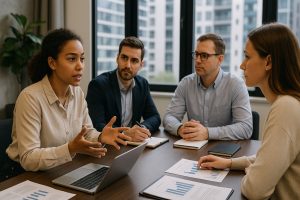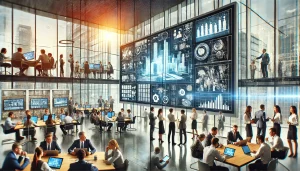
Digital transformation has become a boardroom priority across industries. Organisations pour billions into new technologies, modernised platforms, and ambitious roadmaps promising smarter operations, deeper insights, and competitive advantage.
But if you’ve ever been on the inside of one of these programmes, you’ll know the reality: digital transformation is rarely straightforward. Many projects stall, run over budget, or fail to deliver the promised outcomes. In fact, studies repeatedly show that a majority of digital transformation initiatives fall short of expectations.
The question is not whether digital transformation is necessary, but how to overcome the challenges that make it so difficult to deliver.
1. Misaligned Vision and Strategy
One of the most common pitfalls is confusing technology adoption with transformation. Leaders may rush to adopt AI, cloud, or automation because it feels urgent, but without anchoring these investments in a clear business strategy, they risk building disconnected solutions.
The real challenge is aligning technology with business outcomes. Transformation must begin with the question, “What problem are we solving?” not “What tool are we buying?”
As Luminia Consulting explains, transformation initiatives succeed when digital and IT programmes are fully aligned with business strategy. Without this connection, projects quickly lose direction and momentum.
2. Resistance to Change
Even the best digital tools will fail if the people meant to use them resist. Employees worry about job security, increased workloads, or new skills they don’t feel prepared for. Leadership teams often underestimate this cultural friction.
True transformation is as much about change management as it is about technology. Without investing in training, communication, and trust-building, adoption slows and resentment grows.
3. Legacy Systems and Technical Debt
Many organisations still operate on legacy systems that don’t play nicely with modern platforms. These outdated infrastructures create bottlenecks and balloon costs when integration is attempted.
Ignoring technical debt is like trying to build a skyscraper on unstable ground, eventually, it cracks.
As TechRadar highlights, technical debt accumulates when businesses prioritise short-term fixes over sustainable architecture, leaving them exposed to escalating costs and complexity during transformation .
Stralynn Consulting calls these hidden system dependencies the “dependency dragon” outdated tools and unsupported integrations that quietly derail transformation efforts, creating delays and cost overruns.
4. Lack of Clear Governance
Digital transformation often cuts across departments, regions, and business units. Without strong governance, priorities clash, accountability blurs, and projects drift.
A well-defined governance model ensures clear roles, responsibilities, and decision-making processes. It creates alignment between business leaders, IT teams, and external partners, preventing duplication of effort and wasted resources.
Productboard highlights lack of governance as one of the most common digital transformation traps, warning that weak oversight leads to drift, misalignment, and ultimately failure.
5. Vendor Dependency and Over-Promising
Technology vendors present ambitious roadmaps full of innovation. But their priorities are not always yours. Becoming overly dependent on a single vendor can create costly lock-in and misaligned expectations.
As CTO Magazine warns, vendor lock-in is particularly dangerous in areas like AI and proprietary platforms. Leaders must ask: Who owns the source code? What happens to the data if the vendor fails? Can you pivot if their roadmap changes?
This underscores why leaders must treat vendor roadmaps as informative, not prescriptive, and maintain ownership of their strategic direction.
6. Underestimating Complexity and Cost
Executives often underestimate the scope of what’s involved. Transformation requires more than installing new software, it demands rethinking processes, retraining teams, and sometimes redesigning entire operating models.
This complexity leads to budget overruns and shifting timelines. Leaders must plan for incremental delivery, with milestones that show measurable value early and often.
7. Measuring the Wrong Metrics
Success in digital transformation cannot be measured by technology deployed alone. Too many organisations track outputs (number of apps installed, processes automated) rather than outcomes (customer satisfaction, time-to-value, revenue growth).
Clear KPIs that reflect business value not just IT outputs are essential for credibility and long-term success.
Overcoming the Challenges: A Leadership Imperative
The obstacles are real, but so are the rewards. Leaders who successfully navigate digital transformation do so by:
- Defining strategy first, technology second
- Building trust and engagement with employees
- Addressing legacy systems and technical debt early
- Establishing governance and accountability structures
- Maintaining independence from vendor roadmaps
- Delivering in iterative, value-driven phases
- Measuring outcomes, not just outputs
Closing Thought
Digital transformation is not about chasing technology trends. It’s about reshaping organisations to thrive in a digital-first world. That requires courage to confront cultural resistance, discipline to align with strategy, and humility to admit when course correction is needed.
The companies that succeed won’t be those that simply implement the most tools. They’ll be the ones that confront the challenges head-on, anchor transformation in human value, and deliver measurable business outcomes.
Technology alone doesn’t transform a business. Leadership does.









